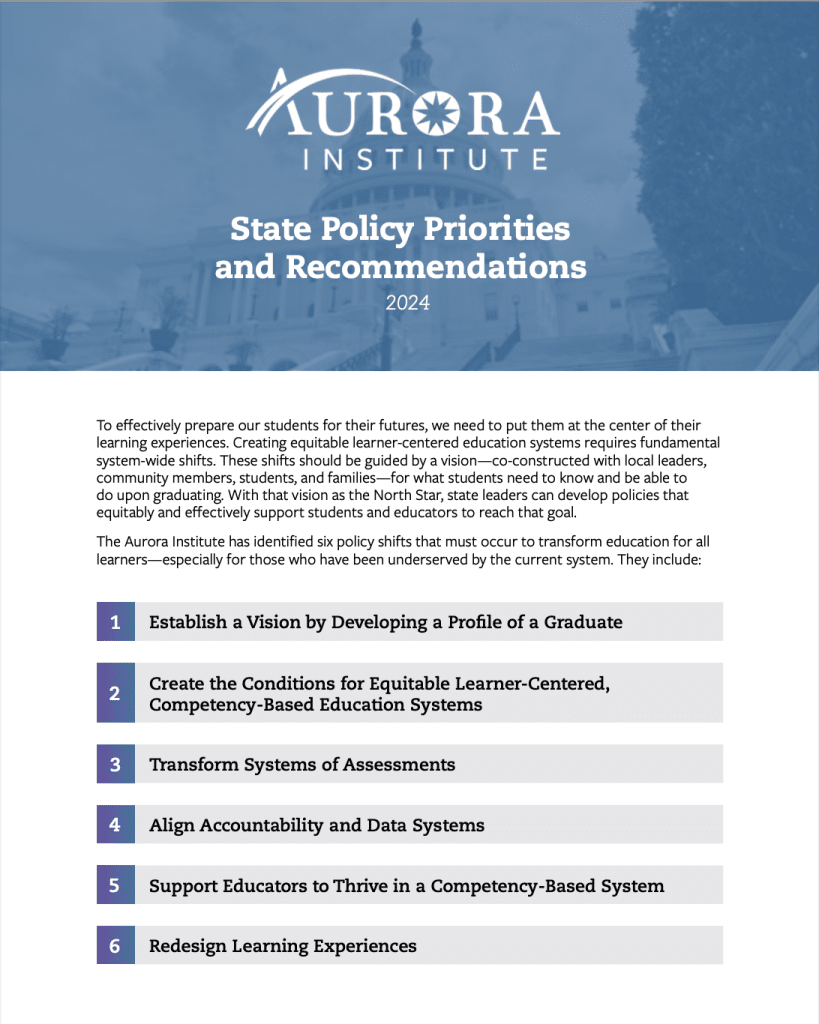April 2, 2024
![]()
Center for Policy
Creating and advancing student-centered policies at the state and federal level.
learn more
![]()
CompetencyWorks
Sharing best practices, building knowledge, and conducting research and evaluation around K-12 personalized, competency-based education.
competencyworks
![]()
Connecting and Convening
Hosting convenings, including our annual Symposium, and connecting stakeholders in the future-focused education space.
LEARN MORE
symposium 2024
Resources to Drive Action
Our resources guide practitioners, educators, policymakers, and advocates seeking to shift from our current state of education to a future state in which all students are prepared to succeed. Use this section to search for published reports, briefs, webinars, and other learning resources on key topics related to policy and practice for next generation learning.
Our Impact
Through Aurora Institute’s work, school leaders, educators, students, and communities are moving the needle to ensure every learner is prepared to be tomorrow’s leader.
450+
BOOKS, REPORTS, ISSUE BRIEFS, AND WEBINARS PRODUCED ON STUDENT-CENTERED LEARNING
180
SCHOOLS DISTRICTS SERVED
800
SCHOOLS AND PROGRAMS PROVIDED RESOURCES AND COUNSEL ON INNOVATIVE POLICY AND PRACTICE
Education Domain Blog
All Education Domain Posts
March 5, 2024
Getting to Know Aurora’s New CEO, Virgel Hammonds
CompetencyWorks Blog
All CompetencyWorks posts
Upcoming Events & Webinars
All Events & Webinars
November 3, 2024
Aurora Institute Symposium 2024
We Are Now the Aurora Institute.
After 17 years of driving educational change under the names NACOL and iNACOL, the time has come to create a forward-reaching identity that reflects all of who we are and all of what we do.






